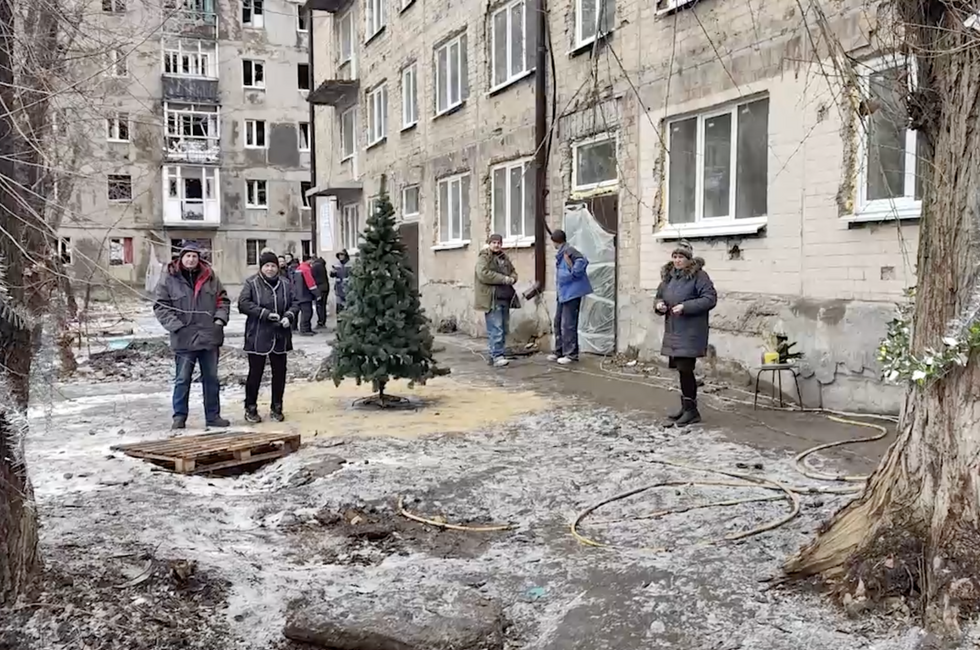

In 17 weeks, occupation administrations published 13,072 addresses of real estate that can be taken away from owners
At least 1,374 addresses of real estate “with signs of ownerlessness” were published by the occupation administrations in four regions of Ukraine during the three weeks of December, from 2 to 22 December. In 17 weeks, since the beginning of the count, at least 13,072 addresses of “property with signs of ownerlessness” have been published.
The announcements of the occupation municipal and regional administrations state that the owners of such property can claim their rights to it by contacting the occupation administrations in person with an identity document, taxpayer identification number and documents certifying the right to the property.
If the owners do not come forward with the documents within 30 days of the announcement, their property will be transferred to “state” or “municipal” ownership.
It is clear from the text of the announcements that the property owners must present Russian documents.
As can be seen from the announcements, such an audit of real estate is taking place in all Russian-occupied territories, except Crimea, which Russia annexed in 2014, including those parts of the Donetsk and Luhansk regions over which Ukraine lost control in 2014-2015. Russia annexed all of these territories in September 2022, but in the parts of the Donetsk and Luhansk regions occupied since 2014-2015, property had been taken away from its rightful owners long before the annexation. Recently, in all occupied territories, property owners must register their property with the Russian State Register.
Since autumn, the occupation administration of the Zaporizhzhia region has been publishing consolidated lists of property “with signs of ownerlessness” once or twice a month. Compared to other occupied parts of Ukraine, these are the shortest lists but the relevant section on the website of the occupation administration of the Zaporizhzhia region shows that the audit of residential and commercial property has been carried out there since 2022.
During the three weeks of December, the occupation administration of the Zaporizhzhia region did not publish addresses of residential property “with signs of ownerlessness”, but was looking for the owners of 43 non-residential premises or complexes of premises, 572 railway cars – mostly loaded with coal, coke, ore, and metals – at railway stations, almost three hundred billboards and two bulldozers at landfills.
On 2-22 December, the occupation administrations in the Donetsk “republic” published the largest number of addresses of real estate “with signs of ownerlessness”. The occupation administration of Mariupol found the largest number of such properties – 432. Also, 101 addresses were published by the occupation administration of Amvrosiivka, a small town on the border with Russia, occupied since 2014.
The occupation administration of Lysychansk in the Luhansk region publishes 18-20 addresses of apartments “with signs of ownerlessness” every week, even if several such consecutive publications relate to the same building. Since November 2024, 100 apartments “with signs of ownerlessness” have been found in one building in a neighbourhood on the outskirts of the city which has been heavily damaged by hostilities in 2022.
The occupation administration of Mariupol has consistently published the most addresses. The tables it publishes make it clear the extent of the destruction and depopulation of the city. For example, according to the summary data of the occupation administration of Mariupol, published on 20 September, 4,213 residential premises “with signs of ownerlessness” were identified in the city. The owners of 1,564 premises, according to the occupation administration, were able to confirm their right to them as of 20 September.
2,220 premises, according to the occupation administration, were excluded from the list of ownerless premises as of early December. That is, in three and a half months, another 656 Mariupol residents were able to confirm their right to their property. At the same time, according to calculations by the Occupied, the occupation administration of Mariupol published another 2,218 addresses of housing “with signs of ownerlessness”.
Thus, as of the beginning of December, according to the published data, every third housing owner in Mariupol could confirm their ownership.
But the media also regularly report about the impossibility for residents who stayed in the city to get housing in Mariupol to replace the destroyed ones. They report about the demolition of entire neighbourhoods, which are being replaced by new residential complexes with apartments for sale and new addresses. In other words, there are hundreds more apartments whose owners were probably not sought.
It can be difficult to find lists of real estate “with signs of ownerlessness” or “ownerless” in the occupied parts of the Luhansk and Donetsk regions. Some occupation administrations in these territories publish fresh lists in the news feeds on their “official” websites, while others, even within the same region, publish them in special sections.
At the end of October, the occupation administration of Antratsyt in the Luhansk region published for the first time a fresh list of properties “with signs of ownerlessness” with a specific date, and added dates to the addresses it had published previously. Lists without a publication date made it absurd to require owners to come forward within 30 days of the publication of their property addresses.
Most of the websites of the occupation administrations in the Donetsk region are virtually impossible to access by users outside Russia, while some of these administrations do not publish the addresses of “property with signs of ownerlessness” on their social media pages.
The occupation administration of Lutuhyne does not inform owners about the possibility of their property being recognised as “ownerless”: no relevant lists can be found on the website or the administration’s social media pages. Nevertheless, in early October and early November, it published dozens of “resolutions” on the recognition of real estate as “ownerless”, i.e., already in the process of being transferred to “municipal” ownership.
The occupation administration of Svatove in the Luhansk region hardly ever updates its website or social media pages.
The occupation administrations of Lysychansk, Rubizhne and Siverskodonetsk are steadily updating their websites and social media pages, but none of the three neighbouring cities that form the agglomeration has internet or telephone connections. In addition, entry to them is restricted, even for people who live next to them in the occupied part of the Luhansk region.
In addition, local media report difficulties in registering or confirming ownership of real estate in the occupied territories due to the lack or complete absence of notaries.
In addition, there are reports of an increase in the number of cases of Ukrainian refugees failing to pass the filtering measures in Russia while trying to return from abroad to obtain Russian documents and confirm their ownership of property in the occupied territories. Ukrainian citizens can enter the occupied territories of Ukraine from outside Russia only after passing a special check at the Russian Sheremetyevo airport by representatives of the Russian special services.

From a discussion on the page of the Lysychansk occupation administration on the Russian social media platform VK
Residents of the occupied territories can obtain a Russian passport only until the end of 2024. Those locals who are unwilling or unable to do so will have only the rights of foreigners under Russian law in their occupied regions.
According to the Ukrainian Ombudsman Dmytro Lubinets, more and more Ukrainian IDPs are returning to the occupied territories due to the lack of financial assistance from the state, the unpredictability of state policy towards IDPs and tensions between them and residents of the communities where they have been forced to move.